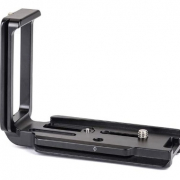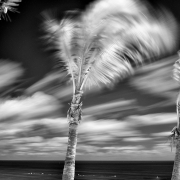Night Filters: To Filter or Not Filter, that is the Question
Night Filters. What are they? What do they do? Do they really work?
There are different perspectives on these filters. Some feel that they don’t really function, but simply cast a blue cast on an image. Others feel they do perform a function, in this case, to balance the numerous white balance issues created with the ever-increasing use of LED lighting, enhance starlight, and help block light pollution.
Night photography is difficult for many reasons, one being the challenge of balancing the color temperature (white balance) on a city scene. The night is filled with light pollution which dims and even blocks the visibility of stars.
Filters do perform a function. Think about UV, IR, polarizing, and ND filters, for example, they all do have an effect on an image.
I am not sure dismissing these night filters is appropriate.
Or fair.
I have photographed city scenes and astro-landscapes with a night filter with a noticeable difference between a shot without a filter and another with a night filter. I use Benro’s Master TrueNight Filter. NiSi makes a similar filter. Both brands block sodium vapor light, yellow light pollution, and low CRI LED.
What is CRI? Color Rendering Index (CRI) is the measurement of how colors look under a light source when compared with sunlight. Low CRI means the human eye won’t pick up much of the color as it should be seen. The sun (daylight) has been traditionally used as the baseline standard to compare different light source technologies. It makes sense because the human eye is adapted best to see best with the sun shining. The higher the CRI, the more true the color of an object is rendered.
Take a look at the apples below. The apple with a CRI of 70 has a blue/purple cast. As the CRI increases, so does the quality of the color of the apple. CRI of 100 is considered perfect natural light rendering, in other words, as if lit by sunlight.

Filters of many types are heavily used by astronomers and amateur astronomers. They block wavelengths and also allow particular wavelengths to be captured, so these photography night filters aren’t much different. They do block light pollution which sadly we are drowning in. Set your camera to daylight WB or auto and take some images. Play with WB and see what the outcome is.

📷 – Nikon D850
🔘 – Nikon 24-120mm f/4 @ 38mm
🎞 – ISO 100
🔘 – f/11
🕒 – 30 seconds

The image above was shot on a rainy night in Fall River, MA. There is a hodgepodge of lighting which makes it very difficult to get it “right”. The clouds reflect the stewpot of ambient light as well. What I like about the filter is that it renders the image evenly, meaning that the wood railing looks natural, the carousel lights are warm, the lantern LED is very white yet the more distant light in the center-left has a warmth. The grass is nicely green and the reflections look good. The image isn’t flattened by the filter. Without the filter, everything is overwhelmed by an orange cast, even with changing the white balance, it was off-balance.
Below, without the filter. All other settings the same.

Below, same image but with a Blue Cooling Filter #82 applied in Photoshop.

From my perspective, these filters are valuable. Unless you are blessed with living in an area with no or little light pollution and balanced lighting, these filters are worth the investment.
Ultimately, like all things photographic, it is about using what works for YOUR vision.
To learn about upcoming workshops and more tips on photography, consider subscribing to my website.
More on filters.. Filter Fumble
Taking photos and want to make them more compelling?
Art isn’t just for walls. Art is also to hold in one’s hands.



 Silvana Della Camera
Silvana Della Camera

 Silvana Della Camera
Silvana Della Camera Silvana Della Camera
Silvana Della Camera
 Silvana Della Camera
Silvana Della Camera
Leave a Reply
Want to join the discussion?Feel free to contribute!